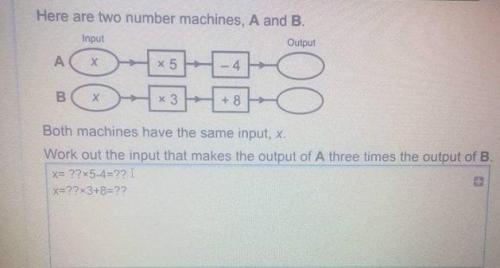-
Posts
2250 -
Joined
-
Last visited
Content Type
Profiles
Forums
Events
Everything posted by RyanJ
-
Thank you. I need to take a bit of time to digest the implications of the equation you've presented so I can get a good understanding of what it is doing and why.
-
What would that look like? Would that require something like this: Calculate the acceleration due to gravity (g) using [math]g = \frac{GM}{r^2}[/math] Calculate the time taken to fall over the distance h under the influence of g using [math] t = \sqrt{\frac{2h}{g}}[/math] Calculate the terminal velocity of the object after falling for time t using [math] v = v_0+gt[/math] Calculate the kinetic energy at the end of the fall using the relativistic kinetic energy equation [math]k_e = m_0 × c^2 × (\sqrt{1 - \frac{v^2}{c^2}} - 1)[/math] While this seems correct outwardly, I can see some issues. It assumes that the acceleration is uniform over the time of the fall and it doesn't factor in that there is an upper speed limit due to relativistic effects. I don't know how to account for the latter, for small heights it's a non-issue but for larger ones, the speed quickly exceeded what is actually possible - implying my model and method is ultimately faulty.
-
Hi all. I've been trying to calculate how much energy would be released from dropping things onto the surface of a neutron star from certain heights. I'm using... [math]\Delta E = GMm (\frac{1}{r_2} - \frac{1}{r_1})[/math] To calculate the potential energy that could be released. Where G is the gravitational constant, M is the mass of the neutron star, m is the mass of the falling object, r2 is the radius of the neutron star plus the height and r1 is the radius of the neutron star. Phew! Would this be the correct formulation to use here? I don't know if I would need to take relativistic effects into account here (and I wouldn't know where to start with that, so advice would also be welcome). Are there any other factors I need to consider here? What proportion of that potential energy would realistically be released from such a collision? I'm trying to get back into practising using mathematics and physics in practice, I'm feeling seriously rusty. I also recall hearing something along the lines of "dropping a marshmallow onto the surface of the neutron star releases as much energy as an atomic bomb" and I wanted to put that claim to the test. I think this is the correct forum, but if not I would appreciate it if the thread could be moved. Thanks!
-
Hi all! It has been quite a while since I last posted here. Again. I'm currently interested in supernovae and the exotic stellar remnants that are left behind from such events. I'm interested in the physics and science surrounding this subject, it's something that I currently have an interest in and want to learn more about. I'm considering doing a degree in astrophysics as I've found myself with quite a bit more free time recently. I'm brushing up on my physics (it's been a while since I used it). I have no problem with them being technical and in-depth and would prefer the details as opposed to the popular science explanations, though I'll happily take a look at those too. I've gone through as much YouTube as I can find on the subject, but I find myself wanting for more information about the subjects. I'm not afraid of getting my hands dirty with the math and whatnot. I'd also be interested in any books about the more theoretical stellar remnants, such as quark stars. If anyone has any suggestions then I would more than welcome them. Thanks!
-

Solving Question - Linear Algebra (I believe)
RyanJ replied to RyanJ's topic in Linear Algebra and Group Theory
So, I was correct in my initial assumptions then? Ha, the irony. I had attempted to solve it as a simultaneous equation but I figured that was the wrong method and abandoned it. Thanks for the answer! -
Hello all! It's been quite a while since I posted here. I noticed this question while trying to help a niece solve a piece of homework and I just couldn't figure this one out. This isn't homework for me, trust me, I have left school long ago. Could someone enlighten me as to the solution for this one and how to go about solving them? Just in case I need to assist with homework again in the future... at least then I'll be able to provide pointers. I also hate not being able to answer such things. I had initially attempted to treat it as a simultaneous equation but I'm not convinced that it's the correct way to handle this one. Thanks!
-
Sorry but that really doesn't make any sense at all to me. I came up with something like this last night - though it may not be correct: (interestWanted * daysInYear) / interestRate)
-
Hi guys! It has been a while since I last posted and I've come with a problem. I know the formula for calculating the future value of a value with compound interest is: [latex]PV = \frac{FV}{\left( 1 + i \right)^n}[/latex] However. I need to figure out how much interest you'd need in order to reach a specific amount of interest per day. For example. I'd need to know how much money I'd need at, say, 7% interest rate per yet in order to get £10 a day interest. I've been unable to figure this out so any help here would be appreciated. This has been giving me a bit of a headache - it's for an excel project I'm working on.
-
Hi all, Does anyone know of a PHP compound parser that takes a compounds formula as input (e.g. UO2(CO3)) and then spits out an array of the element symbols with the number of each present in the specified formula, in this case U=1, O=5,C=1. Any help appreciated!
-
The site references nitrogen dioxide, both the name, formula and CAS number to that page - which was apparently an error. I'm told that they'll be trying to fix it asap. Thanks all!
-
Hi everyone! While browsing through a chemical database site I came upon an entry for nitrogen dioxide that showed the nitrogen having a positive charge: http://pubchem.ncbi.nlm.nih.gov/summary/summary.cgi?cid=3609161&loc=ec_rcs Is this correct? Shouldn't this molecule actually be neutral? Have they confused it for something else? Thanks.
-
Hi everyone! I am looking for some new books so I am interested in some good books about black holes, white dwarfs, neutron stars, magnetars and maybe theoretical objects like quark stars and so on. Not necessarily a technical reference book but books involving those, especially the quark stars would be great! Any suggestions?
-
I know that. Actually that's what I'm working on at the moment I'm thinking of using pattern match and possible techniques such as entropy and compressibility in cases where patterns are not clear cut. The program is being written in C# and WPF so if anyone wants to take a look and work on this with me - feel free to let me know
-
I know. It uses a pattern matching approach. However it also fails with files that have no structure, such as ISO files.
-
That's the idea. Though that uses a trick called magic numbers which misses most file types these days.
-
Hey there guys! I have a question for anyone. Maybe some code already exists for this or a good algorithm is already written down somewhere. Basically what I'm trying to do is make an unknown file type identifier. I'm trying to find if there are any .NET implementations of a file-type matching algorithm out there but I can't seem to find one. Or a good description of an implementation in another language. If there are none then can anyone point me in the general direction of writing one? I'm looking for help with the project so if anyone else is interested in this let me know. Cheers!
-
Yeah. I understand what you are saying. I can upload the C# project if anyone else wants to experiment with it. To see what other things we can do. Though you would need Mathematica in order to process the codes.
-
I think that is just the rest of the number I chose to fold the lines. When I choose 10 cells per line it doesn't have the horizontal rows like that.
-
II eventually gave up on trying to perfect the formula in Mathematica so I wrote a program to generate the code for me. Here is the resulting image if anyone is interested: http://bayimg.com/lAlKLaaCp The highest prime used in this list is 104729.
-
This is the formulation I ended up working with. It does what I need: Size = 300 Image[Table[if[PrimeQ[y* (Size - 1) + x], 1, 0], {x, 1, Size}, {y, 1, Size}]] Edit: That actually doesn't seem to work correctly. I may need to do some more work on it.
-
The closest I've got so far is this: Image[Table[if[PrimeQ[x], 1, 0], {x, 1, 800}, {y, 1, 800}]] That makes an image but shows each line as either black or white instead of each cell. I know I need to build a table and put it into the Image function but I can't figure out how to do it.
-
Hey guys! It has been a while since I posted so hopefully this one will be good. Basically I have a table of prime numbers. What is to write this table as an image - from 1 too 480000 - showing each cell that is a prime as white and the others as black. So basically I'm cycling the numbers from 1-480000 and if they are prime then I want the cell white and otherwise black. I also want to be able to wrap the table to 800x600 pixels. Any help appreciated.
-
Such a thing has been done, with microwaves anyway. Look up negative refractive index or metamaterial on the internet and you'll find plenty of interesting articles about it.
-
You make a good point. I didn't consider .NET languages. Well pointed out. I'd give you a rep point for it but looks like I've got to give others first I guess you win. You got me there.
-
I know what it means I'm just saying that the philosophy of the two language designs is different. You don't often see super-large scripted programs while you often see very large compiled programs.


